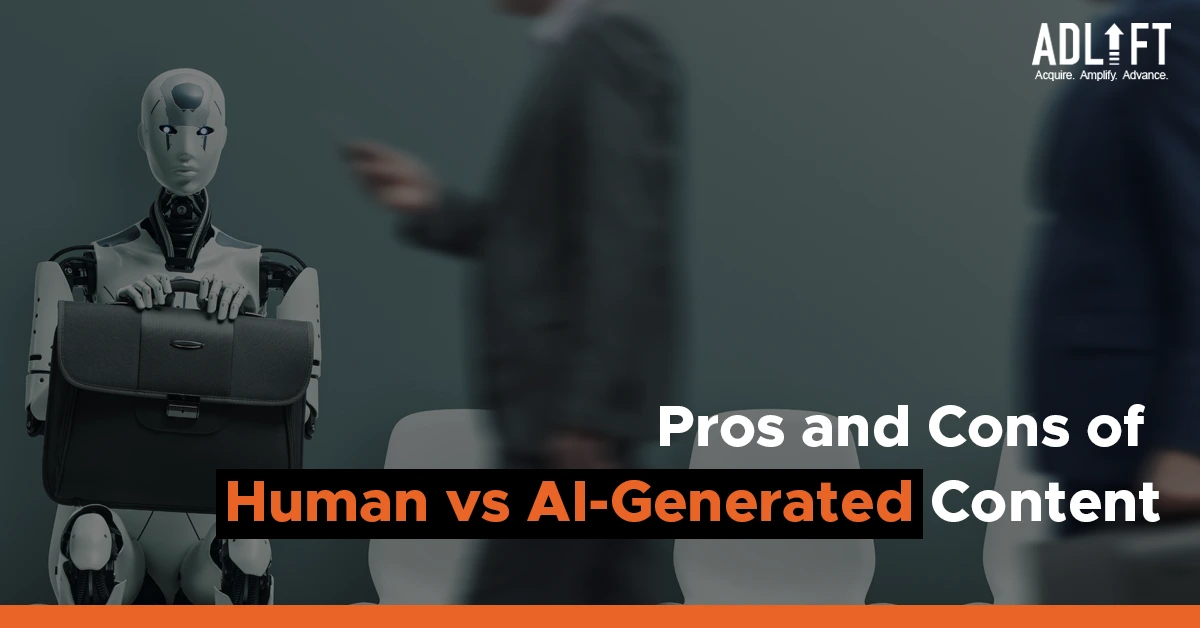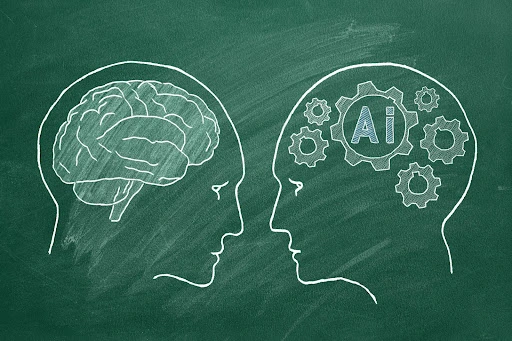Pros and Cons of Human Generated vs AI Generated Content

In today’s digital era, content creation is crucial in various industries, from marketing and journalism to entertainment and education. With the advancements in artificial intelligence (AI), we are witnessing the rise of AI generated content, which has sparked a debate about its merits compared to human generated content. In this blog, we will discover the pros and cons of Human vs AI Content Creation to help you understand their implications in different contexts.
Human generated Content
Human generated content refers to content created by individuals through their intellect, creativity, and expertise. Let’s delve into the advantages and disadvantages of this traditional method.
Pros
- Creativity and Originality: Humans can think creatively, bringing unique perspectives and original ideas to their content. This allows for a more diverse content to engage and resonate with audiences.
- Emotional Connection: Human generated content often carries a personal touch, evoking emotions and establishing a genuine connection with the audience. This human element can enhance storytelling and establish trust.
- Adaptability and Contextual Understanding: Humans excel at adapting content to different contexts, understanding nuances, and tailoring it to specific audiences or cultural sensitivities. This ensures content relevance and effectiveness across diverse target groups.
Cons
- Time and Resource Intensive: Human generated content can be time-consuming, requiring significant investment in research, writing, editing, and quality assurance. This can limit scalability, especially when a large content volume is needed.
- Bias and Subjectivity: Humans are inherently subjective beings, influenced by their personal beliefs, experiences, and biases. This can inadvertently introduce partiality or inaccuracies into the content, affecting its objectivity.
- Inconsistency: Due to human factors, such as varying levels of expertise and style differences, the consistency of content quality and tone can be challenging to maintain, especially in collaborative projects.
AI generated content
AI generated content, powered by machine learning algorithms, relies on data analysis, pattern recognition, and natural language processing. Let’s explore the advantages and drawbacks of this emerging approach.
Pros
- Efficiency and Scalability: AI generated content can be produced rapidly and on a large scale. Once trained, AI algorithms can generate vast amounts of content within minutes, enabling businesses to meet increasing demands.
- Cost-Effectiveness: Automated content creation reduces the reliance on human resources, potentially lowering production costs, especially for repetitive or data-driven tasks.
- Data-Driven Insights: AI algorithms can analyze large datasets, providing valuable insights into content performance, audience preferences, and trends. This data-driven approach can inform content strategies and enhance decision-making.
Cons
- Lack of Creativity and Originality: Despite advances in AI, machines still struggle to replicate human creativity and generate original content. AI generated content often lacks the nuances and emotional depth that human generated content can offer.
- Ethical Considerations: AI generated content raises ethical concerns regarding the ownership of intellectual property, plagiarism, and the potential for misuse. Ensuring ethical guidelines and oversight becomes crucial when utilizing AI for content creation.
- Contextual Understanding and Quality Assurance: AI algorithms may struggle to fully comprehend complex nuances, cultural references, or specific audience requirements. This can result in generic, irrelevant, or offensive content without proper human oversight.
Conclusion
Both Human vs AI Content Creation have their own unique strengths and weaknesses. While human generated content excels in creativity, emotional connection, and contextual understanding, AI generated content offers efficiency, scalability, and data-driven insights.
The ideal approach often lies in leveraging the strengths of both methods, where humans and AI collaborate, combining human creativity and judgment with the efficiency and scalability of AI algorithms. By striking a balance, we can harness the full potential of content creation in the digital age, delivering high-quality, engaging, and impactful content to diverse audiences.
Recent Posts
- Optimizing For Google AI Overviews: What Marketers Need To Know November 19, 2024
- Google’s Latest Shake-up: November 2024 Core Update November 13, 2024
- SEO Ranking Explained: Proven Techniques to Enhance Your Website’s Traffic October 22, 2024
- The Importance of Mobile SEO Optimization: A Guide to Staying Competitive October 16, 2024
- What is Evergreen Content? Build Traffic That Never Fades October 15, 2024
- The Role of Technical SEO Elements in Enhancing Site Performance and Rankings October 10, 2024
- Customer Acquisition 101: Building a Loyal Client Base October 10, 2024
- How User Experience Directly Impacts SEO Rankings: Key Factors to Consider October 8, 2024
- Core Web Vitals and SEO: How to Optimize for a Faster Website? October 3, 2024
- What is Schema Markup? Strategies to Use it for Better SEO Performance September 16, 2024
Get
in Touch
Contact AdLift for a 360-degree marketing plan

